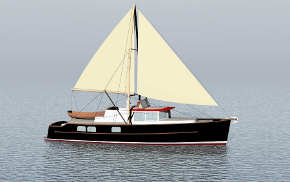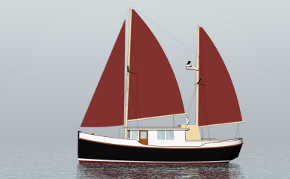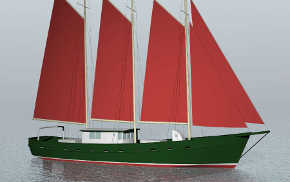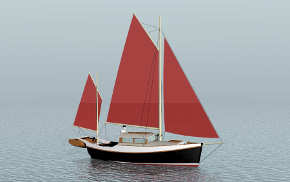Sheerline Problems
Many think the sheer is the most important line on any boat. Get it right and all else is forgiven, get it wrong and nothing else matters. To some extent this is true, this one line in 3D space, must be attractive when viewed from any angle. If it’s filled with humps and hollows from some viewpoint, there’s a problem. It’s just a visual problem, but that’s a big part of what a yacht is, visual artwork.
The boat shown here has sheer problems, she’s a Bestevaer 65S designed by the Dijkstra office and built in 2004. With today’s 3D computer modelling this definitely should not happen. The sheer should be one smooth curve from the stem with it’s lowest point right about where the deckhouse is, and rising to it’s terminus at the transom. Instead we have a line descending from the stem with a bend at the shrouds and going flat, then a slight reverse hump at the deckhouse, then another hollow and slight rise aft to the transom.
Another view of the same thing….
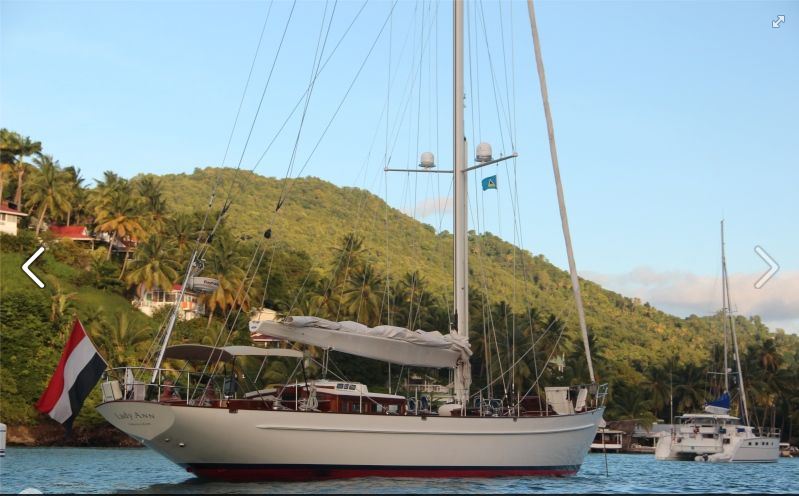
I learned to draw a fair sheerline from Bruce King, I think he picked up hints from Chappelle and Kinney. This was before computer design was common, we worked with pencil and paper. Of course in those days there was always the possibility of “fixing” things in the shop. Usually the builder would call and say, “We’re fairing the sheer today.” And Bruce and I would go and okay the final curve. But today we’ve taken that ability away from the builder and given it back to the designer. Everything is NC cut and any deviation is a major problem. The builder has become an assembler and cannot be a boatbuilder any more, fixing problems becomes an expensive nightmare instead of normal procedure.
To layout a sheer use a very stiff batten and three ducks. One duck holds the batten at the stem, another holds it at the corner of the transom (or sternpost in a double ender). The third duck goes out beyond the transom and pushes up on the spline, this creates a spiral sheer, an ever-tightening curve as it moves aft. The low point is around station #7, but may be further aft with longer overhangs.
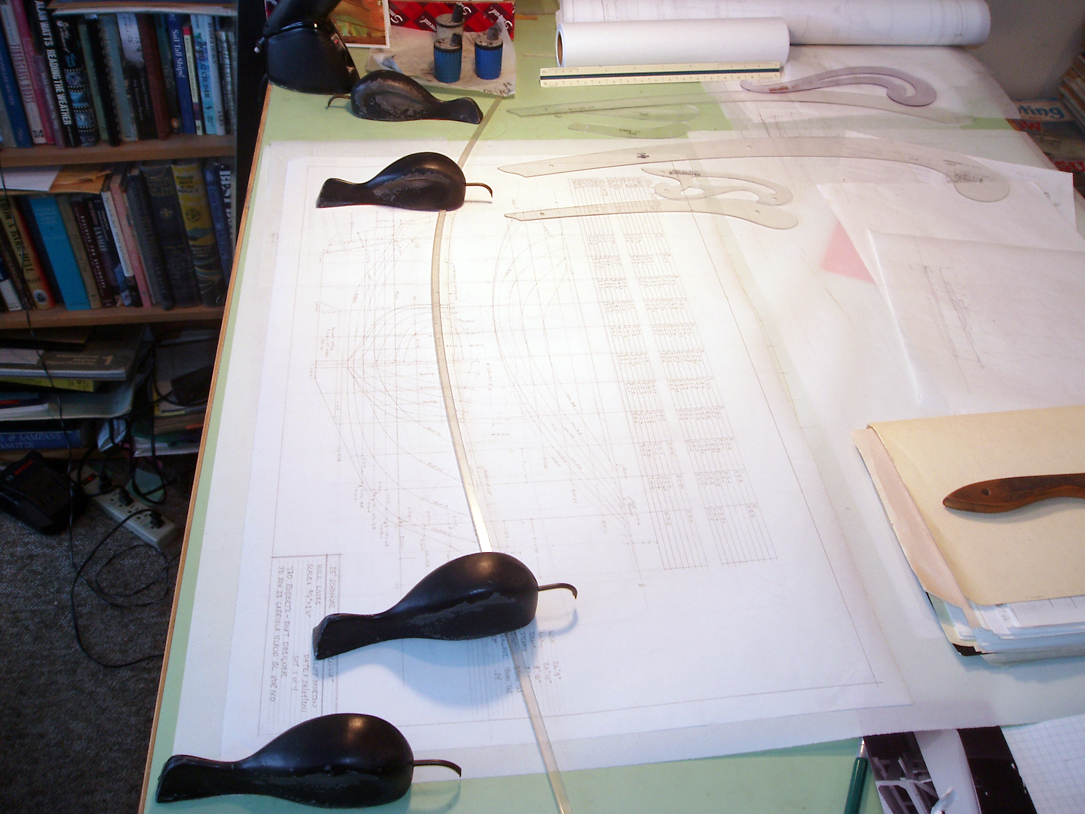
-
External Links
- Sorry, no links have been posted

